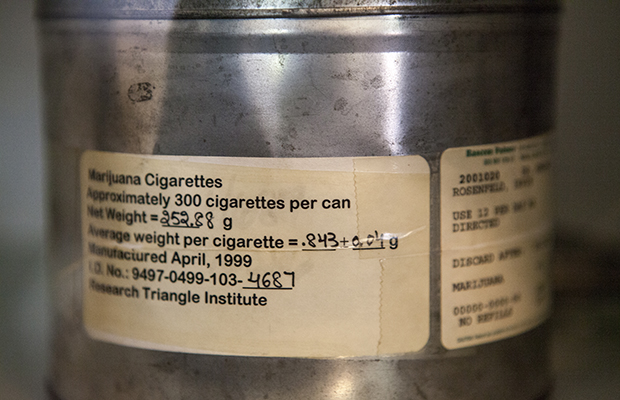
Cannabis
40 Years of Medical Marijuana: Treating Glaucoma with Cannabis
This November marks an important anniversary for the medical cannabis movement.
It will be 40 years — four decades — since the movement began in 1976 when a young college professor in Washington, D.C., through a series of criminal and civil court procedures, proved beyond a shadow of a doubt that marijuana was effectively treating his glaucoma and secured legal access to federal supplies of marijuana. His name was Robert C. Randall and he was my husband.
Diagnosed at the age of 24, Robert was told he would be blind by the time he was 30. But regular use of the federally supplied cannabis blew that prognosis out of the water. At the time of his death, in 2001, at the age of 53, Robert still had his sight.
It would seem that such an outcome would be cheered and celebrated by the ophthalmology community but just the opposite has happened. During the intervening decades the American Academy of Ophthalmology (AAO) and the National Eye Institute (NEI) have routinely and systematically disavowed any promise that cannabis might hold with respect to effective treatment of glaucoma. The single most consistent statement, encapsulated by the Glaucoma Research Foundation, is, “… the effect is too short lived and requires too high doses, and there are too many side effects to recommend lifelong use in the treatment of glaucoma.”
The statement is somewhat correct. Robert smoked 10 marijuana cigarettes a day which seems like a lot, and it was. But the marijuana provided by the federal government was part of the problem. It wouldn’t pass muster by today’s standards. The potency was pitiful. A THC level of 2.6 percent was considered remarkable. The product was manufactured under conditions that might constitute plant abuse and the resulting product was dry, peppered with stems, and extraordinarily harsh. The marijuana was bred for high levels of THC which meant that Robert received little of the benefits observed by the entourage effect.
BUT, it saved his sight.
Still, I can’t help but wonder how Robert would fare in today’s medical cannabis climate. There were, of course, times when he had access to non-government marijuana, often receiving gifts in the form of high-potency cannabis buds. He always responded better to this cannabis, no surprise there, but there was never enough supply to conduct any sort of tests that would prove the value of this premium weed. The technology was also absent for the most part. He knew the buds he received were “really good” but he had no idea of potency or constituent content.
Forty years is a long time and there have been significant changes in the passing decades that make the role of cannabis in treating glaucoma all the more tantalizing. First, there has been a significant shift in how glaucoma is viewed by the ophthalmology community. According to The New York Times, “Glaucoma isn’t simply an eye disease, experts now say, but rather a degenerative nerve disorder, not unlike Alzheimer’s or Parkinson’s disease.” Elevated intraocular pressures (IOP) are now viewed as a risk factor, not a defining symptom. In fact, 30 percent of all glaucoma patients have low or normal IOP.
The discovery of the endocannabinoid system (ECS) is offering researchers new avenues of exploration with respect to glaucoma and cannabis. The neuroprotectant properties of cannabis are well established and there is fresh research that seems to point toward the use of cannabis in a different way. Researchers at the University of Halifax, in a study published last July, noted the need for alternative strategies with respect to the role of cannabis in treating glaucoma. For them it seemed there may be promise in the use of cannabis to, “enhance endogenous endocannabinoid signalling.”
In short, we don’t seem to be close to having an AAO sanctioned cannabinoid medication for glaucoma patients yet but cannabis is out there and, as my husband was fond of saying, “Legal or illegal, marijuana works.”
If you are a patient using cannabis to treat your glaucoma I’d like to hear from you. I’m especially interested in hearing from glaucoma patients in legal medical cannabis states where there is access to many delivery methods that were unavailable to my husband. How are you using it? Smoking? Vaping? Using tinctures? Transdermal patches? If you are a glaucoma patient using cannabis please share your story with me at [email protected].
Are you a medical cannabis patient? Tell us about some of the benefits you’ve seen.


























